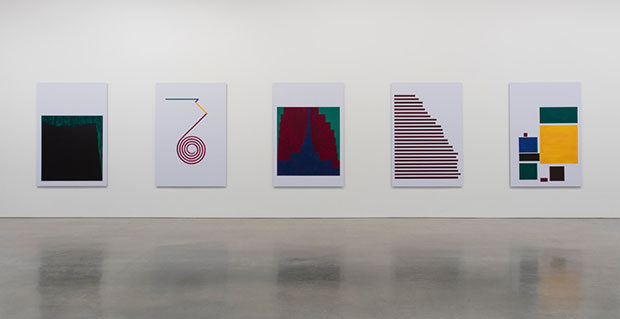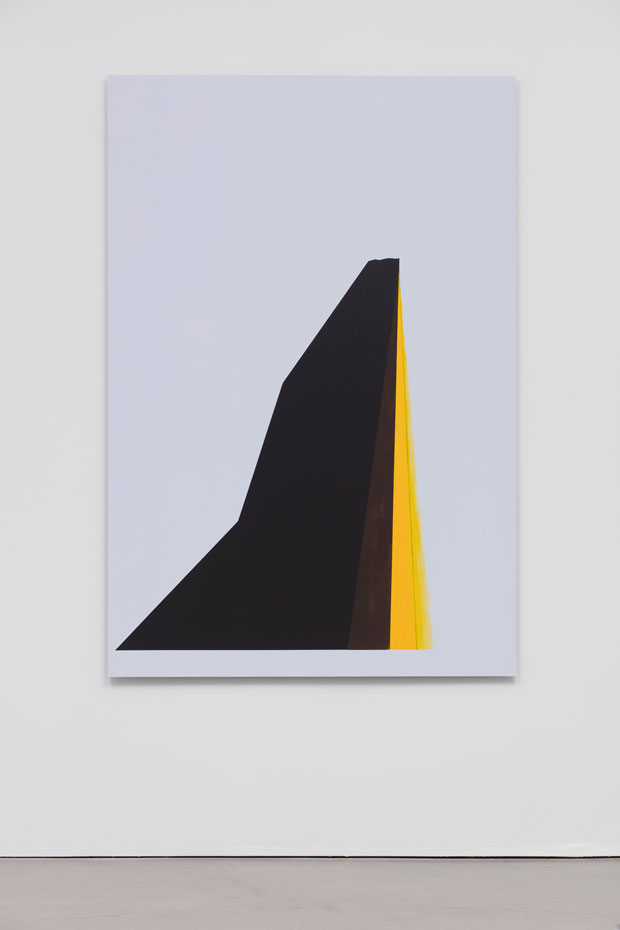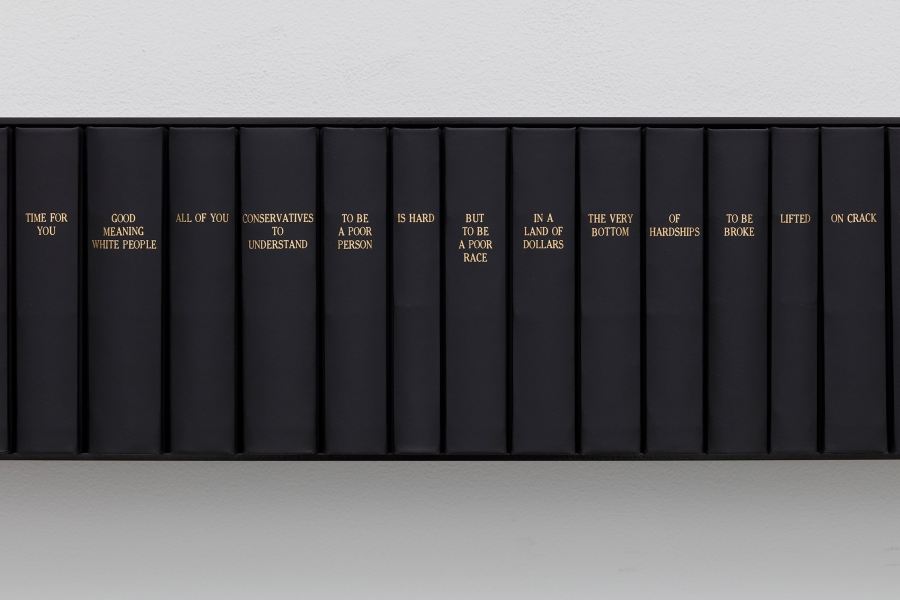
Theaster Gates adds new colour to old data
The US artist moves into poetry and data visualisation for his new LA exhibition at Regen Projects
Theaster Gates has expressed himself through a wide variety of media, from gospel singing to pottery, architectural salvage to video installations.
Yet at his newly opened exhibition at Regen Projects in Los Angeles, But To Be A Poor Race, the 43-year-old artist engages with two practices less commonly associated with his work: poetry and data visualisation.

Both the show’s title and its accompanying data comes courtesy of the civil rights activist and sociologist, W.E.B. DuBois.
“To be a poor man is hard,” wrote DuBois in his 1903 book The Souls of Black Folk, “but to be a poor race in a land of dollars is the very bottom of hardships."
To illustrate DuBois’ point, Gates has created a series of colourful paintings, which look like Bauhaus-style abstractions, yet actually represent some of the DuBois’ sociological findings on land ownership, education, and even the prevailence of kitchen appliances in 20th century African American households.
However, the exhibition isn’t a simple, didactic lament. It also looks at the spiritual depth that comes with this bearing of such hardships. Gates told the New York Times that one reading of his show might be that "to be a poor race is to be a better race, or more interesting one.”
This comes across in the show's poetry. Gates has become something of a folk archivist for African American heritage, finding permanent homes for the record collection of the pioneering house music DJ Frankie Knuckles and the editorial archive of Jet Magazine, a black news weekly which ceased print publication in 2014.

Gates is presenting some of his bound Jet magazines on the walls of Regen Projects, and has printed his poetry onto the spines of these volumes. There are three different works featuring bound Jet magazines. Each work includes a stanza of a long poem written by Gates. “Arranged at eye level on the gallery wall, Gates envisions that when the poems are read aloud by its readers,” explains the gallery, “their voices will create a cacophony of sound, chanting the mantra of Black political thought and street poetry of the late 90s.”
It’s a bold break from our more usual silent contemplation of contemporary art. Yet we’ve come to expect the unexpected from this singular US artist.